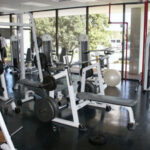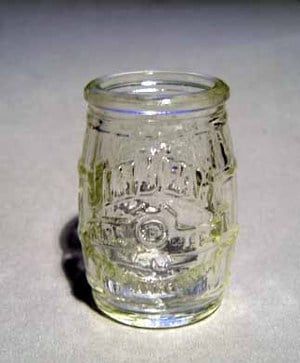Bodybuilding goes beyond just lifting weights. A good weight lifting routine has several aspects. When bodybuilding you need to remember proper nutrition, daily cardio exercises, drink plenty of water specially when weight lifting, include plenty of protein in your diet, and remember to take proper rest periods between sets.
Warm-up.
To begin with, a good routine includes a cardio warm-up and light stretching before any weight lifting. A good habit to get into when you are weight lifting is to start with a warm-up version of your core exercise. After doing 5 minutes running, using the treadmill, or some other light cardio exercise, do five sets of increasing weight decreasing reps of the core lift you planned for that day to warm-up that muscle group.
You should start your warm-up sets by lifting 50% of your max weight for 10 repetitions. Increase the weight in the second set to 60% for six reps. Continue increasing weight by 10% as you decrease repetitions. Your fifth set should be slightly less than the weight you will be lifting during your actual workout and should only be done for one rep. This is meant to be a warm-up and should not fatigue your muscles. Lifts during the warm-up should be easy for you.
Don’t Try to do Everything in One Day, Split-up Your Workout.
Good weight lifting routines split your workout up by body parts. To do this you group large muscle groups together, for example; legs and abs on Monday; chest, shoulder and triceps on Wednesday; back, biceps and forearms on Friday. You should workout each muscle group once a week and allow time for muscle repair and muscle growth.
Muscle growth does not happen during your workout. Muscles actually repair themselves and increase in mass during rest periods between workouts. When you give your muscles more time between workouts your muscles have more time to repair themselves and increase your muscle mass.
Get the Most Out of Your Workout Daily by Working to Exhaustion.
You build muscles through progression. Progress by starting each workout with five more pounds than you used in last week’s workout. For your weight lifting routine to do your body the most good, you need to work to exhaustion on all sets. Exhaustion is when your muscles can no longer safely perform that lift properly. You should spend about an hour a day and only 3 to 5 days a week lifting. Always use good form. Use slow, steady movements to protect your muscles from injury while lifting.
Reps
If you are using the right amount of weight, you should only be able to do 5-7 reps per set when working on your large muscle groups, 10-12 for small muscle groups. You should hit exhaustion somewhere within that range of reps, if not you didn’t start out with the right amount of weight.
Sets
A good weightlifting routine should include 5-8 sets for large muscle groups and 2-4 sets for small muscle groups. You shouldn’t be spending hours on end working out; a good weight lifting routine only takes an hour of your day. Keep track of what you were able to do this week as this is what you will base next week’s routine on.
Rest Periods Between Sets.
After you have completed each set, you need a rest period. Some people try to limit the rest between each set to a set time, this doesn’t work well. You should rest as long as you need for your muscles to be able to perform the next set safely. Some people might feel rested and ready after 90 seconds while others need a full five minutes, or perhaps even six. The key is to let your body tell you when it is time to move on to the next set. This will keep you from injuring yourself due to exhaustion.
Water
Drinking water is important. You need to wash impurities out of your system as you workout. If you are slightly dehydrated, you will have a drastic drop in muscle strength. Drink enough water before, during, and after your routine to keep your muscles hydrated. This is important if you want to get the most out of your weightlifting efforts
Nutrition.
While diet plays an important role in your overall health, it is important that your muscles have enough calories to burn during your workout. To keep your muscles fed through your workout you should have a high glycemic carbohydrate snack just before your workout. A piece of fruit for example, is a good high glycemic carbohydrate to have before your routine. Including a small amount of protein will help you regulate your blood sugar levels. This should keep you from having your blood sugar levels drop during your workout.
Post Workout Nutrition.
For three hours after your workout, your muscles need to be fed protein and good quality carbohydrates. High glycemic carbohydrates will get into your system faster and are a better choice during this period. A large portion of your day’s caloric intake should be during this time. For your body to build muscle it will need more calories than usual.
Protein.
After your workout, your muscles need protein to rebuild. You need to get protein into your system as quickly as possible. Many bodybuilders like to bring a protein shake or some protein powder and a liquid to mix it with (like orange juice or water) with them to drink right after the workout is over. Whey protein in milk with oatmeal or eggs is another good choice right after your workout. A tuna sandwich with a glass of orange juice, or any good quality lean protein and a high glycemic carbohydrate will work. You want to keep away from fats during the three post workout hours, fats will slow the body’s absorption of the protein and carbohydrates that it needs.
Sample Routines
All sets are done to failure, meaning done until your muscles fail to be able to perform that exercise using proper form. Keep track of what you do each week. You should lift five more pounds weekly. Muscle gain is done by progression; if you cannot progressively increase your weight weekly then you need to increase the number of reps you perform.
Warm-up
• Start with a 5 minute run on the treadmill to get your blood pumping
• Set 1 of main exercise at 50% of weight x 10 reps
• Set 2 of main exercise at 60% weight x 6 reps
• Set 3 of main exercise at 70% weight x 4 reps
• Set 4 of main exercise at 80% weight x 2 reps
• Set 5 of main exercise at 90% weight x 1 rep
Monday (legs and abs)
• Warm-up (see above)
• Squats: 5-7 reps, 5-8 sets
• Leg Curls: 5-7 reps, 5-8 sets
• Calf Raises: 10-12 reps, 2-4 sets
• Abdominal Crunches: 10-12 reps, 2-4 sets
Wednesday (chest, shoulder and triceps)
• Warm-up (see above)
• Flat Barbell Bench Press: 5-7 reps, 5-8 sets
• Incline Dumbbell Press: 5-7 reps, 5-8 sets
• Lateral Raises: 5-7 reps, 2-4 sets
• Barbell Shoulder Press; 5-7 reps, 2-4 sets
• Bench Dips: 5-7 reps, 2-4 sets
• Triceps Pull downs: 5-7 reps, 2-4 sets
Friday (back, biceps and forearms)
• Warm-up (see above)
• Dead lifts: 5-7 reps, 2-4 sets
• Standing Barbell Curls: 5-7 reps, 2-4 sets
• Seated Dumbbell Curls: 5-7 reps, 2-4 sets
• Wrist Curls: 10-12 reps, 2-4 set






